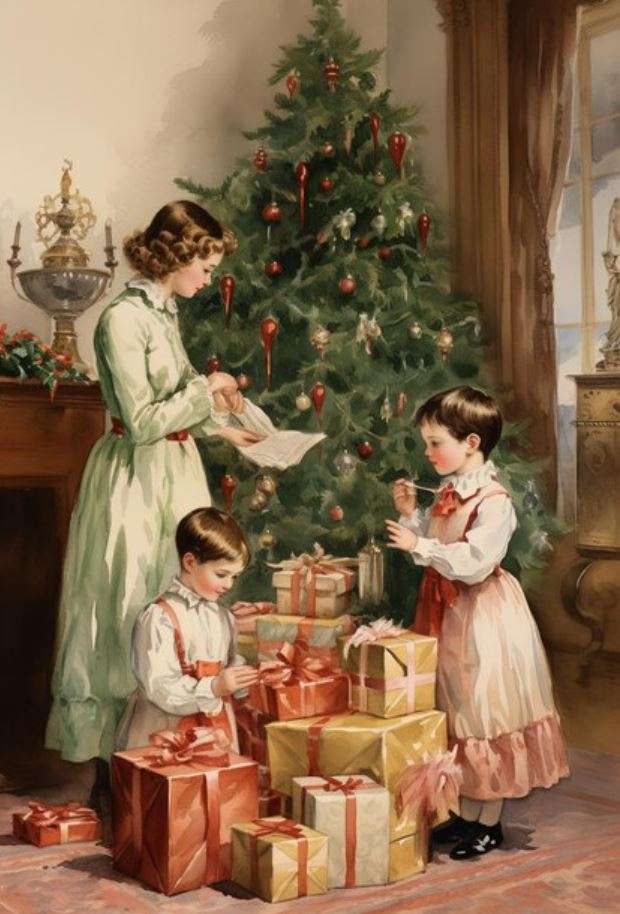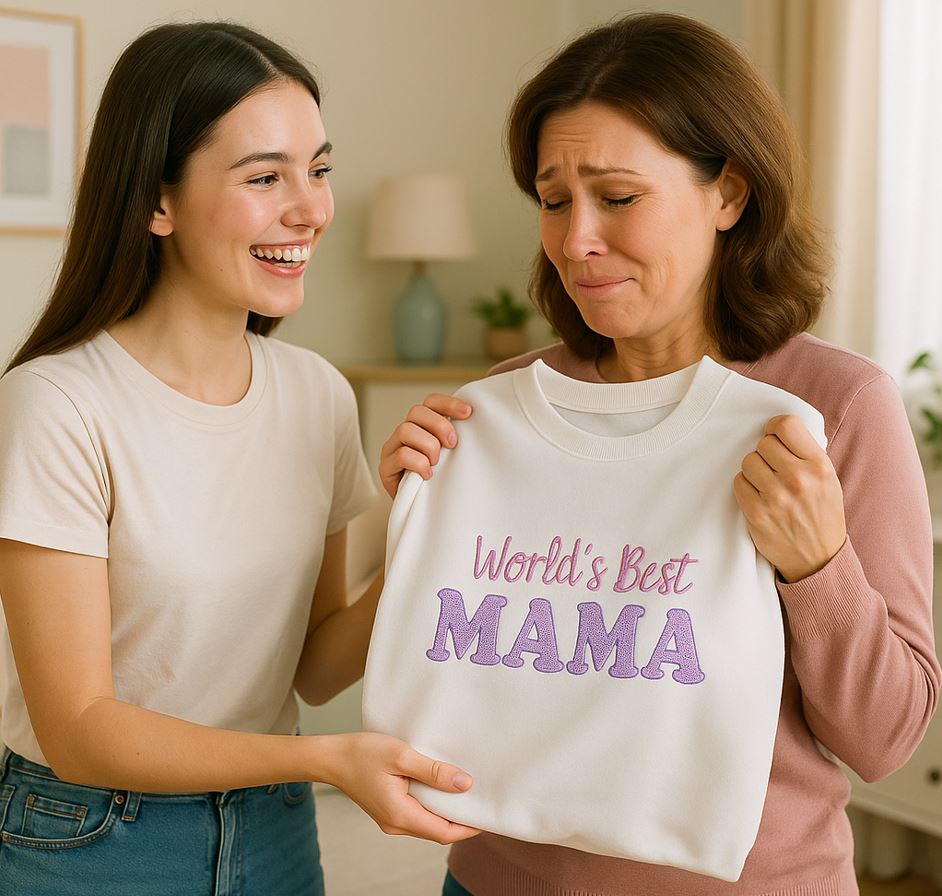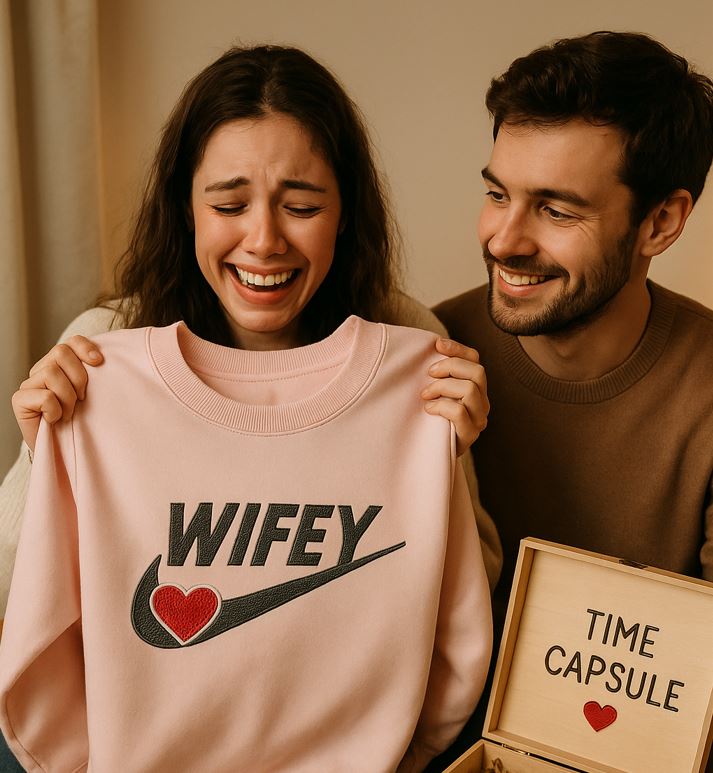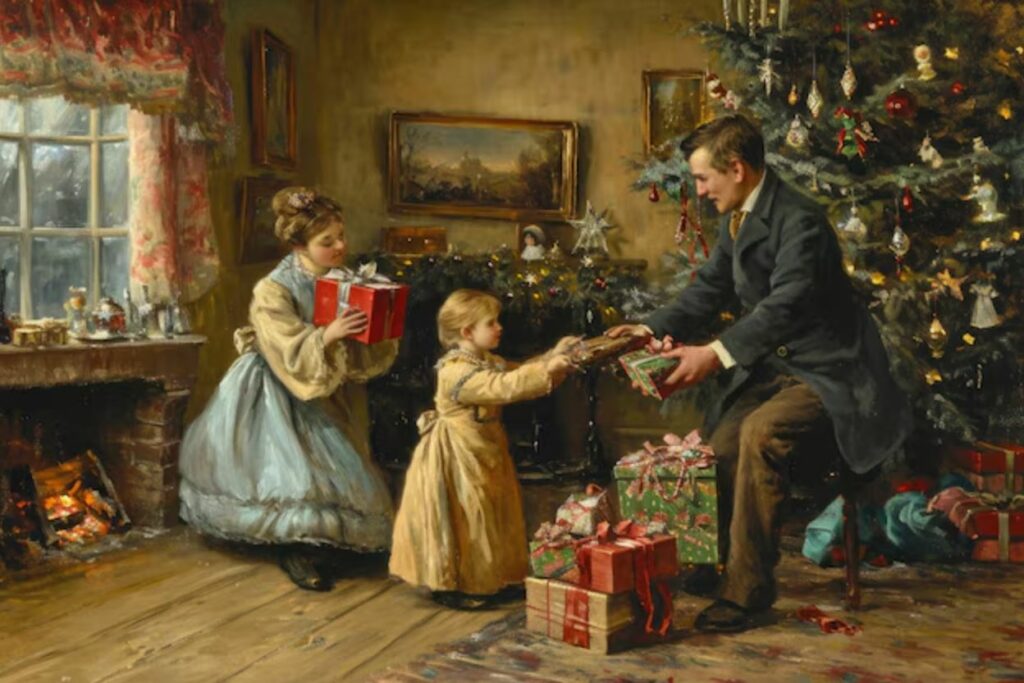Holiday Gifts, Family Gifts
How Gift-Giving Lost Its Way and How to Bring It Back
Gift-giving is one of humanity’s oldest traditions. At its core, it’s a way of expressing love, gratitude, or connection—sometimes even obligation. But in today’s fast-paced world, giving a gift can feel more like a social performance than a heartfelt gesture. The line between genuine generosity and social pressure has blurred. This article dives into the fascinating journey of gift-giving through history and asks a simple but important question: How can we bring the meaning back?
Ancient Roots: The Birth of the Gift-Giving Tradition
Long before malls and online wish lists, early humans were already exchanging gifts. These weren’t store-bought trinkets, but vital offerings—food, tools, crafted items—meant to secure bonds, show respect, or repay a favor. In prehistoric societies, giving and receiving helped shape alliances and ensured group survival.
As civilization advanced, the act of giving evolved. In ancient Egypt and Mesopotamia, gifts became formal symbols of diplomacy between rulers. The Chinese and other Asian cultures exchanged gifts in ceremonies deeply tied to hierarchy and honor. Even gods were offered gifts—ritualistic tributes of gold, food, or livestock meant to appease, thank, or seek favor.
The Greeks and Romans brought gift-giving into public celebrations. Festivals like Saturnalia saw families and friends exchanging small tokens of affection—an early echo of modern Christmas traditions.

From Chivalry to Courtesy: The Middle Ages and Victorian Elegance
In medieval Europe, gifts carried heavy emotional weight. A knight might offer an embroidered handkerchief before heading into battle—both a token of affection and a symbol of protection. Royal courts, meanwhile, used extravagant gift-giving to cement power structures and gain favor.
By the time the Victorian era rolled around, gift-giving was elevated to a fine art. Every present had to be just right—elegant, appropriate, and in tune with the recipient’s social status. It became a way to show refinement and good breeding, rather than simply affection.
This period also saw a rise in the exchange of romantic gifts. Love letters, pressed flowers, and handcrafted keepsakes became popular. These weren’t just objects—they were messages, carefully crafted to say what words couldn’t.
As industrialization brought mass production, gift-giving expanded to the middle class. Holidays like Christmas took on the first hints of commercialism. Suddenly, gifts were not just rare tokens—they were expected.

The Modern Era: When Giving Became a Burden
Fast forward to the 20th and 21st centuries, and gift-giving is everywhere—across every major holiday, birthday, anniversary, and milestone. While the impulse behind it remains rooted in love and generosity, modern gift-giving often comes with an unwelcome companion: pressure.
Thanks to aggressive advertising and a culture of comparison fueled by social media, many of us feel that our gifts must be impressive, expensive, or Instagram-worthy. We buy because we’re expected to. We shop last-minute, scroll aimlessly through online stores, and sometimes end up giving something we know won’t truly resonate.
Psychologists even have a term for the disconnect that follows: “gift mismatch.” It’s that awkward moment when a gift feels impersonal or off the mark—leaving both the giver and the receiver disappointed.

A Quiet Revolution: The Return to Meaningful Gifts
But things are beginning to shift. Over the past decade, and especially since the global pandemic, people have started reevaluating their approach to gift-giving.
We’ve seen a growing appreciation for the thoughtful over the flashy. Gifts that feel personal—something handmade, something with a story—are back in style. There’s a resurgence in slow, intentional giving. People are choosing quality over quantity, favoring items that reflect personality, values, and shared experiences.
The pandemic, in particular, reminded us of the fragility of connection. With lockdowns and distance came a longing for intimacy. That translated into care packages, handwritten notes, and gifts that spoke of time and effort, not price tags.

Giving With Heart: How to Make It Matter Again
So, how do we reclaim the joy of giving without falling into the trap of obligation?
It starts with observation. The best gifts come from noticing—what someone loves, what makes them laugh, what they daydream about. A well-chosen book, a framed photo, a hand-mixed playlist—these say, “I see you.”
Emotional resonance trumps financial value every time. A simple embroidered shirt with a phrase only the two of you understand can mean more than a designer brand. A letter tucked into a gift box can elevate even the most modest present into something unforgettable.

Personalized gifts make a powerful impact. Whether it’s a mug with a custom design, a journal embossed with initials, or jewelry that reflects someone’s birth month or story, it shows you didn’t just shop—you thought.
Experience gifts are another meaningful option. A weekend retreat, tickets to a favorite artist’s concert, or even a shared online class can create memories that outlast any physical object.
And let’s not forget the planet. Eco-conscious gifts—reusable items, sustainable packaging, locally made goods—show that your care extends beyond the recipient to the world they live in.
Inspired Giving: Real Ideas, Real Connections
If you’re looking for ideas that move beyond the ordinary, consider the recipient’s essence.
For the creatives in your life, imagine giving them a custom-embroidered sweatshirt featuring their favorite lyric or sketch. Pair it with a beautiful journal or a box of artisan tools they’ve never tried.
The homebody might adore a soft, handmade blanket and a letter pressed with their name. Or a recipe book filled with dishes you’ve shared—or hope to.

Nature lovers light up when given something alive: a plant in a uniquely painted pot, a seed kit, or a hiking map with trails you’ve marked together. Even a symbolic gesture, like donating to a reforestation project in their name, adds a deeper layer.
Fashion enthusiasts will appreciate items that highlight their individuality—a tailored shirt embroidered with their aesthetic, a curated lookbook, or even a voucher to design their own clothing piece.
For the minimalist, less truly is more. A single well-made item, a timeless book, or a day spent doing something meaningful together can be the most appreciated gifts of all.
Conclusion: The Story Your Gift Tells
A meaningful gift is never about the object alone—it’s about the emotion it carries, the thought behind it, and the connection it nurtures. In an age where it’s easy to click “add to cart” and move on, choosing a gift with intention is a quiet act of love.
Whether it’s a personalized embroidered shirt that says “this is so you,” or a moment shared that turns into a memory, the best gifts are never forgotten. They are stories. And every story starts with attention.
So the next time you find yourself searching for the perfect gift, pause. Think not about trends, expectations, or price tags—but about the person. The connection. The meaning.
That’s the kind of gift that changes everything.


